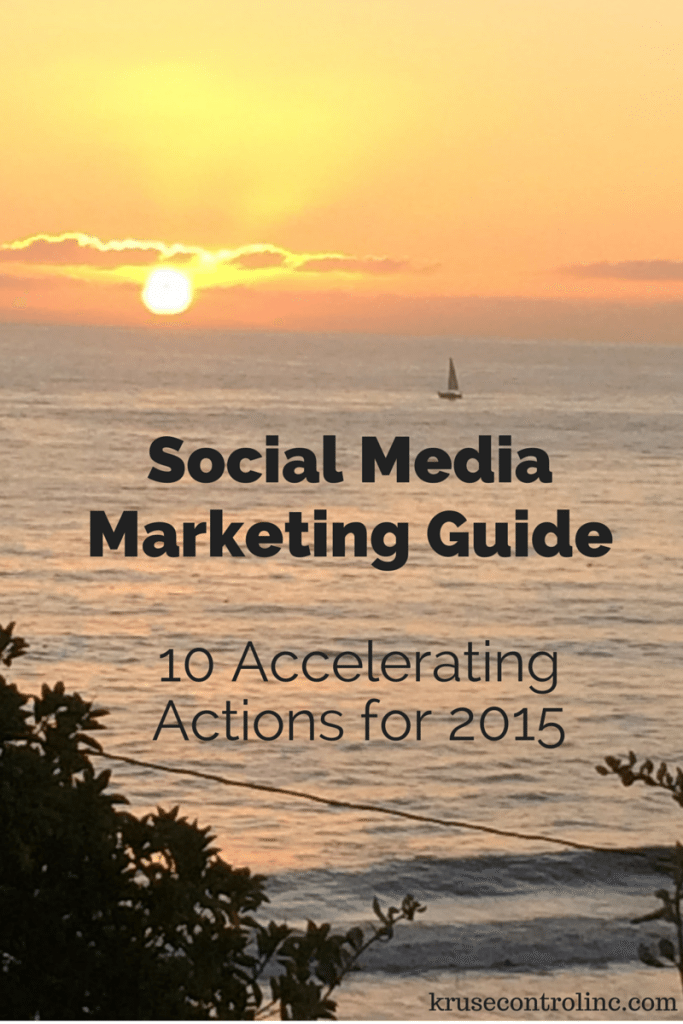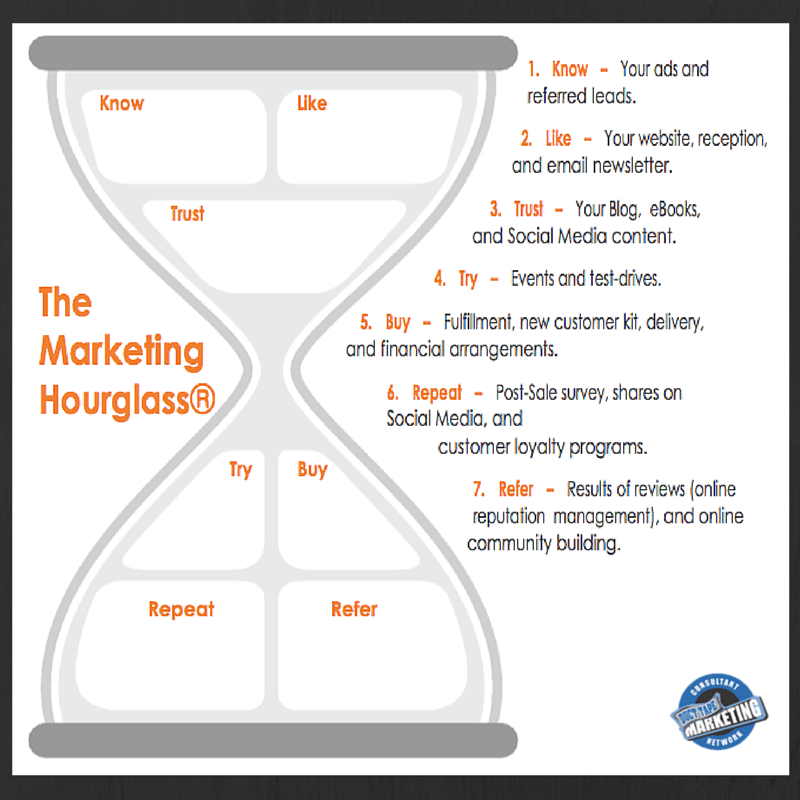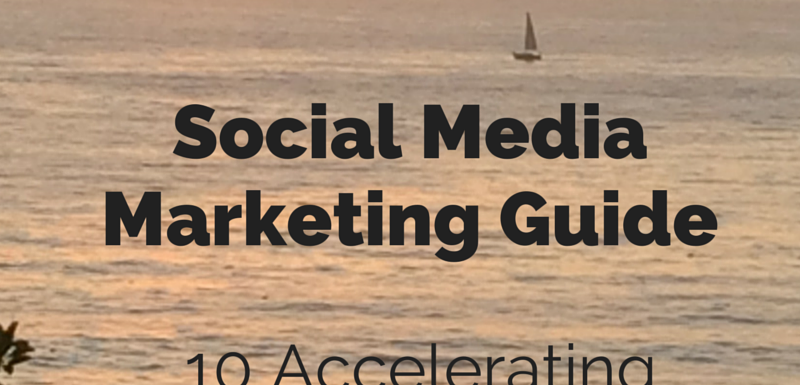 While some businesses have been rolling out their marketing plans for the New Year, many others’ marketing plans seem to have gotten lost in the hustle to get the year started. Goals don’t get set and soon hip-shooting becomes commonplace. If you find yourself and your business in this situation, you may see a storm brewing. You may feel a sense of urgency mixed with impending doom. A solid Social Media Marketing Guide can help you navigate the waters of the vast online ocean.
While some businesses have been rolling out their marketing plans for the New Year, many others’ marketing plans seem to have gotten lost in the hustle to get the year started. Goals don’t get set and soon hip-shooting becomes commonplace. If you find yourself and your business in this situation, you may see a storm brewing. You may feel a sense of urgency mixed with impending doom. A solid Social Media Marketing Guide can help you navigate the waters of the vast online ocean.
First and foremost, you’ll want to maintain a holistic approach to online marketing and advertising in 2015. Methodically integrate Social Media within your overall marketing plan. Social Media is now intertwined with blogging, SEO/search engine marketing, social ads, email marketing and online reputation management.
When steering your ship, it’s often difficult to know what you’re getting right and what isn’t paying off.
Information is power. Good, dependable information can put revenue on your books. Unreliable information can hurt your bottom line and jeopardize your reputation.
Information gives you the power and insight to make great decisions. Whether you have someone in-house doing your marketing and advertising, or you’re outsourcing it, Social Media and online marketing can be a minefield without the best, most up-to-date information.
Some of the following information may be completely new to you, and that’s ok. Stay the course. Ask questions. The specific actions in this Social Media Marketing Guide will foster calm waters and just might help you accelerate leads and sales in 2015:
Social Media Marketing Guide for 2015
1. Start with a Solid Marketing Plan
Develop strategy, set goals and map out a timeline to implement your marketing plan. Here’s an outline of a proven, successful marketing plan:
Strategy:
- Determine your ideal client(s)
- Describe and document your vision
- Develop your core message
Content:
- Create a content strategy
- Designate your content creators
- Consider a community manager who monitors, responds, engages and nurtures leads.
Develop content strategies for each stage of the buying process – Marketing Hourglass:

Lead Generation:
- Social Media
- Advertising (including Social Ads)
- SEO/SEM
- Email Marketing
- Referrals
Lead Conversion:
- Prospect
- Present/Engage
- Nurture
- Transact
- Refer
Planning:
- Priorities
- Organizational Development
- Marketing/Content Calendar
- KPI Dashboard
- Budget
- Processes
Implementation: Routine + Consistency = Momentum
- Daily
- Weekly
- Monthly
- Quarterly
- Yearly
2. Choose the Right Partner or Candidate
I’m always struck by how many business owners jump right into Social and online marketing without knowing the “lay of the land.” We all need a GPS to guide us on the right roads to our destination. You need proven experience when communicating your business “brand value” online to generate leads and sales.
Depending on your unique needs and your operational structure, an experienced, skilled team member to run your marketing and advertising in-house may be the best choice. If you choose to outsource, you’ll need to select a qualified partner to support and help you achieve your business’ revenue goals.
Perform your due diligence. The Social Media marketing space is filled with poseurs who can sell you on their product but may be unable to follow through with results.
3. Audit All Your Online Profiles & Perform a Competitive Analysis
Take a look at your online “real estate” on a regular basis. Make sure each profile is filled out completely. Make sure all your profile images and headers tell a compelling visual story of your brand.
In order to set goals in your marketing plan, you’ll need to find out what the landscape is like. Are you aware of how your competitors are performing? How do you measure up to them? We provide a ton of valuable data about the players in our client’s market. The information buried in that data should inform your strategic decisions.
4. Identify Your Ideal Customer/Target Audience
The power of Social Media marketing and advertising is that it gives you the ability to laser target the type of customer who is most likely to buy from you. The better you can define your particular buyer personas, the more successful you’re efforts will be.
To start, define the demographics of your ideal audience: Location, age, interests, buying cycle, etc. Next, use these questions to guide your content strategy and sales processes:
- What’s important to them right now?
- What does success look like for them?
- What might hold them back from buying?
- Most research is done online. How do they come to a decision?
5. Implement a Solid Content Strategy
Based on the answers to the questions in #4, you’ll develop a content strategy that will answer those questions. Don’t sell something, solve something. Content should attract, entertain and eventually engage buyers in conversations that lead to sales.
6. Construct Your Content Hub (Your Blog)
I’m not going to sugar coat this: there are a lot of really sad and borderline harmful website solutions out there right now, especially in automotive retail. Very few “solutions” deliver the type of experience your customers and prospects are expecting. Every site looks the same as the next one.
Fact: your customers shop online. They visit sites like Amazon and Zappos. When you’re looking at a product on Amazon for instance, everything you could want to know as the potential buyer is there for you. Does your website offer the same experience?
Many businesses put their product front and center (above the fold) however, people don’t buy what you do, they buy why you do it. Of course it’s important to display your products for the customer that’s looking to buy today, but it’s just as important to offer great content/answers to theirs and others’ most frequently asked questions.
Your blog allows you to tell the story of your business. It addresses concerns and questions your customers have and helps you get found in search results more readily.
7. Modernize Your Operation to Include Content Creation
Teams and groups of employees are very often more than the sum of their parts. In the case of content creation, there’s strength in the crowd!
Each company we work with struggles when only one person is creating content for videos, blogs, Social Media, customer testimonials, and managing online reviews.
Don’t struggle, syndicate. Leverage the power of your employees to illustrate their expertise in their own way. It won’t be easy.
- Some will say they can’t write. If so, ask them to answer a question that one of your customers might ask. Extra points for them coming up with the question themselves.
- Some will be more comfortable talking in bullet points by email.
- Some will enjoy being in front of the camera. Others will run away.
- Some just won’t want to participate at all. In this case, remind them that customers and prospects are “Googling” salespersons’ names now. Do they know what’s out there for customers to see? Creating content is a chance for employees to build their own online brand as a member of your organization.
8. Follow Through with Social Advertising
Facebook ads are one of the most valuable platforms available to ensure that you achieve your goals. Done right, you can reach your ideal customers and spend less than you would for Google ads or traditional advertising.
There are 4 components to creating ads that drive leads and sales:
- Design
- Text
- Target
- Test, test and re-test
Remember: Routine + Consistency = Momentum
There are 4 types of ads you have at your disposal:

Every time you place an ad, you must first designate your goal:
- Boost posts – Goal: Increase engagement
- Promote your Page – Goal: Grow your Likes
- Send people to your website – Goal: Generate further interest in your product or content
- Increase conversions on your website – Goal: Visitors complete a Lead Form for follow up
9. Effectively Manage Your Online Reputation
96% of consumers’ buying decisions are influenced by online reviews.
Many business owners tend to be in a state of denial about their online reputation. In 2015, ignoring what’s being said about you online could have dangerous consequences, no matter how good or bad it is. Implement an internal process to capture your happy, loyal customers’ opinions.
- Leverage a cost-effective software solution.
- Promote culture and processes for Social Customer Service. There’s nothing worse than when a customer reaches out to you via Social Media and you don’t respond (or are slow to respond).
- Establish a plan for Social Crisis Management. Don’t panic. Be proactive, not reactive.
10. Establish Return on Investment (ROI)
Setting clear goals and objectives isn’t just an exercise, it’s the pathway to knowing real ROI. Take advantage of the tools available to:
- Monitor
- Measure
- Analyze
Sit down monthly with your team or your vendor. Take those results they’ve achieved and tie them back to your goals. This information will guide you to making changes and improving your efforts. It should also prove to you that Social Media marketing can drive leads and sales.

Extremely useful post! I gained some valuable insight for my USBCT learning and development business in Taiwan! Thank you very much.
You’re very welcome, David.